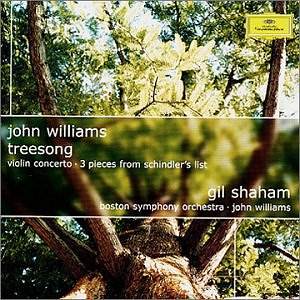 Composer: René Eespere, Ester Mägi, Peeter Vähi, Lepo Sumera, Jaan Rääts
Composer: René Eespere, Ester Mägi, Peeter Vähi, Lepo Sumera, Jaan Rääts
Works: Significatio for violin, cello and guitar (Eespere), A duo for flute and guitar (Mägi), Two Romances for soprano and guitar (Mägi), Three Miniatures for guitar (Mägi), Two Songs – The Night and With Eyes Closed (Mägi), Dance of the Goddess for guitar (Vähi), Odalisques for flute, guitar and cello (Sumera), Allegro Op.93 for violin and guitar (Rääts)
Performers: Kaia Urb (soprano), Janika Lentsius (flute), Urmas Vulp (violin), Henry-David Varema (cello), Heiki Matlik (guitar)
Recording: Recorded October 1999 in the Art Museum – Toompea, Tallinn
Label: Estonian Radio ERCD 030
The album “Significatio – Estonian Chamber Music” presents a remarkable glimpse into the vibrant yet underappreciated contemporary Estonian musical landscape. This compilation showcases a selection of significant works from five prominent Estonian composers, all of whom emerge from a rich cultural tapestry that includes influences of folk traditions and a history of artistic resilience. The program spans the latter half of the 20th century, offering an enticing opportunity to explore the distinct voices of composers like René Eespere and Ester Mägi, whose contributions have been pivotal in shaping Estonia’s musical identity.
The performances are uniformly excellent, with a particular highlight being the interpretation of Eespere’s “Significatio.” The work unfolds as a polyphonic tapestry of interwoven lines between the violin, cello, and guitar. The opening passages are characterized by a gentle melodic simplicity that, as it develops, morphs into a complex counterpoint reminiscent of early 20th-century neo-classicism. Urmas Vulp’s violin plays with an expressive vibrato that enhances the emotional depth, while Heiki Matlik’s guitar provides a harmonic bed that is both supportive and rhythmically engaging. The ensemble’s balance is commendable; the guitar is not relegated to mere accompaniment but instead stands as an equal partner in dialogue with the strings.
Ester Mägi’s contributions are particularly noteworthy, with “Two Songs – The Night and With Eyes Closed” showcasing the soprano Kaia Urb’s exquisite vocal artistry. The lyricism of these pieces is enriched by the cello’s lush timbre, which adds a poignant warmth to the overall sound. The absence of text in the booklet is a missed opportunity, as understanding the poetic content would undoubtedly deepen the listener’s engagement with the music. Nevertheless, the emotional resonance of Urb’s interpretations—filled with subtle inflections and dynamic shading—creates an evocative atmosphere that lingers long after the final note.
The recording quality deserves commendation; the acoustic space of the Art Museum in Toompea is captured beautifully, providing a resonant backdrop that enhances the intricate textures of the chamber music. The clarity of individual voices is commendable, allowing listeners to discern the nuanced interplay between instruments. In solo guitar works, such as Vähi’s “Dance of the Goddess,” Matlik’s sensitive fingerstyle technique brings out the instrument’s rich bass, effectively showcasing the guitar’s versatility. The engineering captures the full dynamic range, ensuring that both the delicate passages and the more forceful outbursts maintain their integrity.
Comparatively, while the works of Eespere and Mägi might draw parallels with those of established Western contemporaries, the distinct folk-inflected harmonic language and the use of instrumental color set them apart. The ethereal textures in Sumera’s “Odalisques,” particularly the final movement titled “Silent,” evoke a meditative state through the innovative use of microtones, skillfully executed by flutist Janika Lentsius. Such moments reveal a profound sensitivity to the subtleties of sound, echoing the contemplative nature often found in Eastern European music, yet firmly rooted in the Estonian ethos.
This collection serves as both an introduction and an invitation to delve deeper into the world of Estonian music. The high caliber of performance combined with the diverse compositional styles offers a rewarding listening experience. Each work contributes to a broader narrative of cultural expression, reflecting both the historical context and the contemporary vitality of Estonian art music. The album stands as a testament to the fact that while some of these composers may not yet be household names in the West, their music is deserving of a place in the wider canon of contemporary classical music.



